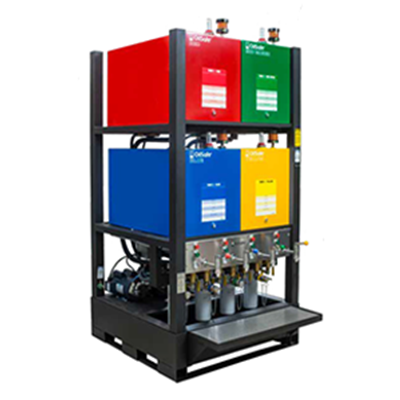Common lube room mistakes can lead to extra costs, unplanned downtime, and risks. Optimizing lubrication practices could help prevent these problems and ensure efficiency and cost-effectiveness. Explore how to address issues like storage, inspection, training, and handling protocols.
A lube room is a dedicated space in a facility for storing lubricant oil and other fluids. It is used for maintenance and machine operations. The main function of a lube room is to provide a clean, well-organized, and controlled space for handling and storing lubricants.
Maintaining a clean and organized lube room is an essential part of optimal machine performance. It ensures clean, cool, and dry lubricants for use. A messy lube room can lead to a contaminated and degraded lubricants. It results in higher costs and malfunctions. This blog will explore common mistakes in lube room practices and how to address them.
Image Source: www.machinerylubrication.com
Lack of Storage Protocols
Improper storage of oil drums in a lube room can lead to contamination of lubricants. Oil drums should be kept inside and must be away from dust and humidity. It must be stored in a temperature at 70 degrees F. Variations in storage temperature can cause the drums to "breathe”. During the day, the air and liquid expand due to hot temperature. At night, they will contract causing microscopic particles of dust and moisture to enter. This can reduce the performance of the lubricant. It shorten equipment lifespan and need costly repairs. Use drum covers or specialized shelters to protect drums.
Investing in a color-coded bulk storage system is a recommended practice. This is for efficient labeling and contamination control. A high-quality desiccant breathers will help keep out moisture and dirt. The desiccant gel collects and retains moisture from the surrounding air.
Not Conducting Inspection and Maintenance
Regular inspections are crucial for maintaining the safety of lubricants in lube rooms. This is to identify signs of contamination, leaks, or damages to drums. It helps to prevent loss of lubricants and ensures proper storage management.
Establishing a first-in-first-out (FIFO) rotation system maximizes lubricant use. The first lubricants stored were the first to use before the newer ones. It reduce expiration risk and maintain the freshness of lubricant. Scheduled inspection and FIFO improve stored lubricant lifespan and reliability. This leads to efficient machine performance and reduced costs. These methods also contribute to efficient machine operation.
Absence of Labeling System
Improper labeling in a lube room has a negative impact in safety and operations. Unclear labels on lubricant containers can cause confusion among tasks. It misidentify lubricants in the wrong machine. This compromises the effectiveness of lubricants and could cause damage to the machine.
Proper labeling in lube rooms is crucial for promoting safety and efficiency. It reduces the risk of accidents. It also increase maintenance costs due to incorrect application and insufficient use of PPE.

Image Source: www.machinerylubrication.com
Bad Practices in Lubricant Handling
Bad handling of lubricants can lead to contamination. It causes dust, dirt, and debris to accumulate in the funnels used for dispensing oil. These contaminants speed up wear and tear on machine components. Funnels are usually used for oil dispensing. It collects dust and debris in storage and can be disposed of in a cabinet after use and drip-dried.
Maintain lubricant handling equipment regularly such as pumps, hoses, and transfer containers. This will prevent impurities. It establish designated zones for activities like transfer and dispensing.
Lack of Training
The lack of lubrication training can negatively affect the operational efficiency. Maintenance staff may lack knowledge and skills. These skills involves accurate dispensing, proper equipment handling, and safety protocols. This leads to malfunctions, leaks, or lubricant contamination.
Lack of training in lube room operations can lead to poor machinery performance. It can also result in unplanned maintenance downtime and safety risks. This will cause challenge in tracking lubricant usage. It also identifies trends for preventive maintenance.
Conclusion
Lube Room is an essential part of facility’s maintenance and reliability program. Organizations can improve and cut cost. Addressing issues like storage, inspection, training, and handling protocols is necessary.
At CRE Philippines, we understand the importance of efficient lubrication management. We offer MLE Machinery Lubrication Engineer Course. This training is designed to empower your organization in overcoming common lube room mistakes. Our expertise can be beneficial in optimizing your machinery's reliability. It can help you maximize your cost savings. Speak with us to improve your lubrication practices and ensure the long-term success of your facility.
Reference:
(n.a, n.d) 5 Lube Room Mistakes That Are Costing You Money. Machinery Lubrication


